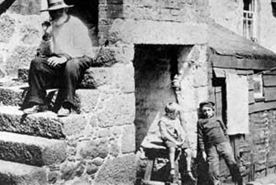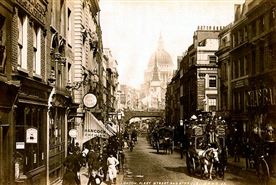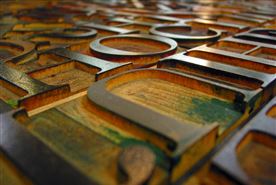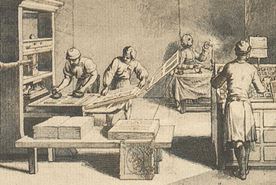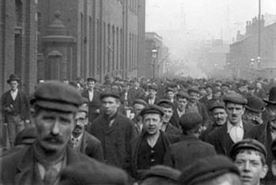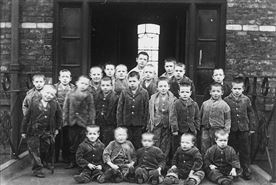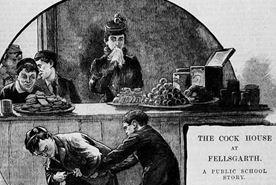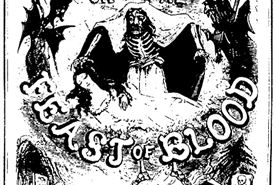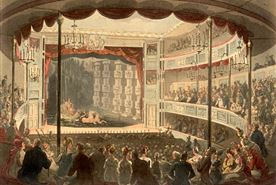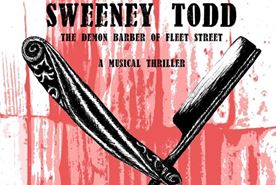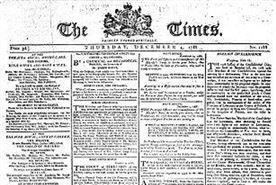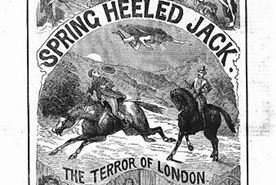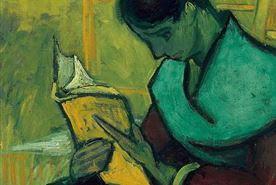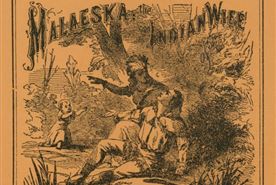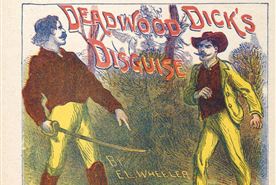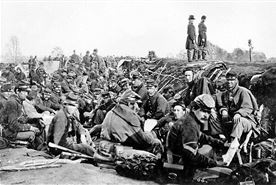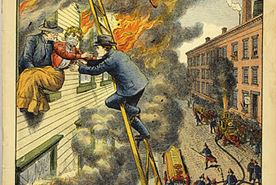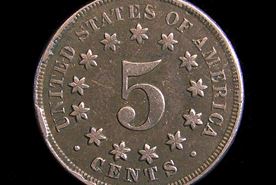YOLA 09B: 19th-Century Paperback Lit - all
Adjective
barely able to read and or write
semiliterate
A publishing craze that hit both America and England from the mid- to late nineteenth century attracted the readership of the semiliterate working class.
A publishing craze that hit both America and England from the mid- to late nineteenth century attracted the readership of the semiliterate working class.
Phrase
have something as a major concern or theme
centered on
In America, dime novels typically centered on tales of the American Revolution and the Wild West, while British penny bloods (later called penny dreadfuls) told serial tales of horror or fictionalized versions of true crimes.
In America, dime novels typically centered on tales of the American Revolution and the Wild West, while British penny bloods (later called penny dreadfuls) told serial tales of horror or fictionalized versions of true crimes.
Phrase
start to develop
opening up
These paperback novels were sold at newsstands and dry goods stores and succeeded in opening up the publishing market for both writers and readers.
These paperback novels were sold at newsstands and dry goods stores and succeeded in opening up the publishing market for both writers and readers.
Verb
to go or spread from one person or place to another
circulating
Though Johann Gutenberg's printing press was designed in the fifteenth century, it was not until after the first newspapers began circulating in the eighteenth century that it became a profitable invention.
Though Johann Gutenberg's printing press was designed in the fifteenth century, it was not until after the first newspapers began circulating in the eighteenth century that it became a profitable invention.
Adjective
able to be used or obtained
accessible
Though few children's books were available, penny dreadfuls were highly accessible, especially to male youths who created clubs in order to pool their money and start their own libraries.
Though few children's books were available, penny dreadfuls were highly accessible, especially to male youths who created clubs in order to pool their money and start their own libraries.
Noun
something that gives someone an idea about what to do or create
inspiration
Thomas Prest was known for getting his inspiration from "The Old Bailey" of the London Times, a section devoted to real-life horror stories.
Thomas Prest was known for getting his inspiration from "The Old Bailey" of the London Times, a section devoted to real-life horror stories.
Adjective
not giving good, steady, or useful results
unproductive
Despite the warning from Lord Shaftsbury that the paperback literature was seducing middle-class society into an unproductive life of evil, the penny bloods grew in popularity.
Despite the warning from Lord Shaftsbury that the paperback literature was seducing middle-class society into an unproductive life of evil, the penny bloods grew in popularity.
Verb
to describe by labeling or giving a name to
categorized
In 1860, Beadle and Adams was the first firm in the United States to publish a title that would be categorized as a dime novel.
In 1860, Beadle and Adams was the first firm in the United States to publish a title that would be categorized as a dime novel.
Phrase
make it easier for something to happen or for someone to do something
paved the way for
Originally a magazine series, Anne Stephens’ Malaeska: The Indian Wife of the White Hunter sold approximately 300,000 copies in the first year as a novel. Its success paved the way for the new fad in America.
Originally a magazine series, Anne Stephens’ Malaeska: The Indian Wife of the White Hunter sold approximately 300,000 copies in the first year as a novel. Its success paved the way for the new fad in America.
Noun
the process by which cities grow bigger and more and more people go to live in them
urbanization
Beadle dime novels became so popular that the company had to build a factory of hack writers to mass produce them. As urbanization spread, tales of the Wild West were in less demand, and tales of urban outlaws became popular.
Beadle dime novels became so popular that the company had to build a factory of hack writers to mass produce them. As urbanization spread, tales of the Wild West were in less demand, and tales of urban outlaws became popular.
Adjective
causing very great excitement or interest with shocking details
sensational
At that time, dime novels were chosen for their illustrated covers rather than their sensational stories and characters.
At that time, dime novels were chosen for their illustrated covers rather than their sensational stories and characters.
Noun
the state of being liked, enjoyed, accepted, or done by a large number of people
popularity
Despite their popularity, by the late 1880s dry goods stores were so full of unsold books that prices dropped to less than five cents per copy. Many titles that could still not sell were given away or destroyed.
Despite their popularity, by the late 1880s dry goods stores were so full of unsold books that prices dropped to less than five cents per copy. Many titles that could still not sell were given away or destroyed.
Noun
an amount of money paid to the original creator of a product, book, or piece of music
royalties
The International Copyright Law, passed by Congress in 1890, required publishers to pay royalties to foreign authors. Selling at less than five cents a copy, the paperback industry was doomed until the arrival of pulp paper.
The International Copyright Law, passed by Congress in 1890, required publishers to pay royalties to foreign authors. Selling at less than five cents a copy, the paperback industry was doomed until the arrival of pulp paper.
